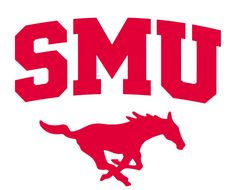Podcast: Play in new window | Download
Subscribe: RSS
The sweet smell of financial success of major college football may quickly become its undoing.

In case you haven’t been paying attention, there is an incredible amount of money being poured into the most recent television deals to cover America’s largest college football conferences.
College football has been on television for decades. Why has the pie been growing lately?

In the increasingly fractured television landscape (traditional networks, cable television operators, and now internet-based television providers such as Amazon and Peacock), Saturday’s college football games are now delivering the second largest weekly audiences on television. Only the NFL delivers a larger weekly viewing audience during football season.
The four remaining major college football powers (the SEC, Big Ten, Big 12, and ACC) are able to deliver a weekly TV audience ranging from three to ten million viewers every Saturday in the fall. Like the NFL, college football games attract a fairly young mostly male buying demographic which is coveted by certain advertisers.
A variety of beverages makers (soft drinks, beer, and other alcoholic beverages), automobiles, insurance providers, fast food restaurants, investment companies, jewelers, and others have started to flock to Saturday college football games to reach their target market.

With annual increases in viewership for Saturday’s day-long slate of college football games, the competition for the rights to televise those games became red-hot, too. ESPN/ABC, Fox Sports, CBS, NBC, and others have dramatically upped their monetary offers to secure years of televised major conference college football games featuring the upper tier of teams.
In recent years, these new television contracts have ballooned into the billions of dollars.
Who receives the money, and who SHOULD get the money?

At least for now, each major college conference receives the entire value of the television rights pie. Conference members negotiate a formula to determine the payouts which go to the individual schools every year. The SEC schools’ financial sharing arrangements may not be exactly the same as the Big 12 Conference, but they are likely quite similar.
Two years ago, the SEC’s perpetual last place finisher (Vanderbilt) pocketed the same $50 million share of the SEC’s television treasure chest as the national football champion Georgia Bulldogs.

Vandy loves the way the SEC carves-up the TV money pie! However, some teams in another conference will be going on a financial diet beginning this fall.
The Atlantic Coast Conference paid its current members about $35 million per school in television money in recent years.

As part of SMU’s decision to join the ACC beginning this season, the Mustangs have agreed to receive a 0% portion of the ACC’s television rights package – for the next nine years! Two other new members of the ACC (former Pac-12 members Stanford and California) will receive just 30% of a traditional share from the conference TV pie baked by ESPN.
The Baker gets to determine which pies it wants to sell

Speaking of ESPN, this year’s 12-1 Alabama team made it into the four team College Football Playoffs ahead of 13-0 ACC champion Florida State. Despite all the lame excuses put forward afterwards by the College Football Playoff selection committee, Bama was chosen for one reason. The Crimson Tide reliably delivers a larger television audience than the Seminole Nation would have generated for ESPN.
That crimson-colored baked cherry pie (Alabama) brings more customers into the proverbial “store” than Florida State.
Yes, the baker (ESPN) owns the television rights to the College Football Playoffs. Naturally, they wanted to offer a product (Alabama) which would give them the best chance to attract the most customers. Higher television ratings for ESPN equal more revenue for ESPN, too.

Did you know that ESPN must cover the $470 million annual price tag paid for the two national semifinal games plus the championship game each year? That’s why 12-1 Alabama got the nod over 13-0 Florida State.
True to form, the semifinal game played between Alabama and Michigan drew 27 million viewers for ESPN. That was the highest rated non-NFL event on ESPN in several years. It was nine million viewers greater than the 18 million viewers for the second semifinal game between the University of Washington and Texas.
With ESPN’s expensive TV deal, we should have expected this to happen. The major college football conferences sold their souls to the devil (television).

By the way, don’t expect this process to be any different when the new 12-team playoff starts this fall. We just learned our lesson this year. Expect ESPN to continue to (quietly) pull the strings in making the final determination of both the participating teams and their playoff seeding this fall.
Do the athletes currently receive any portion of that tasty television revenue pie?

The television pie being baked for each major college football conference is then distributed to each member institutions as the conference members see fit. The athletic departments of these schools utilize a portion of those big television payouts to help pay for many other sports on campus.
Other than some basketball programs and a few baseball and gymnastics programs, the vast majority of college sports lose money for their schools. That doesn’t mean that women’s volleyball or men’s tennis teams aren’t important. Their costs exceed the revenues being generated.

Scholarship money used to provide tuition, room, and board is quite substantial. Football and basketball players can obtain scholarships covering up to 100% of their financial needs. Those participating in other sports on campus are fortunate if they receive up to 50% of their college costs covered.
College football players are quite aware of the incredible amount of money being paid to the major college conferences to watch them play on Saturdays during the fall. The advent of “Name, Image, and Likeness” (NIL) money has become available recently to help college student-athletes earn an increasing amount of money. However, that is only a fraction of the money being generated by television revenues being sent to the conferences and, ultimately, to their member institutions.
The players may not have to wait much longer
In the smaller Ivy League on the East Coast, the member schools do not even provide any athletic scholarship money for sports participants. The Ivy League’s television deals are rather modest compared to the major conferences.

On Monday, the National Labor Relations Board issued a ruling in favor of the Dartmouth College men’s basketball team. According to the NLRB, the hoopsters should be considered employees and be paid for their time.
“Because Dartmouth has the right to control the work performed by the Dartmouth men’s basketball team, and the players perform that work in exchange for compensation, I find that the petitioned-for basketball players are employees within the meaning of the [National Labor Relations] Act,”
Of course, Dartmouth plans to appeal the decision. The school released a statement which claims their athletic programs do not generate a profit to pay the players.
“Unlike other institutions where athletics generates millions of dollars in net revenue, the costs of Dartmouth’s athletics program far exceed any revenue from the program–costs that Dartmouth bears as part of our participation in the Ivy League. We also do not compensate our athletes, nor do we provide athletic scholarships; all scholarships are based on financial need.”
The precedent from this ruling should be sending shivers up the financial spines of major college conferences and member schools.

In most businesses, the cost of labor generally amounts to about 50% of the revenues being generated.
In today’s major professional sports, most franchise owners and players are now sharing the revenues being generated by the business on a 50/50 basis.

With the fast-growing television revenue pie (paid for by ESPN/ABC, Fox Sports, CBS, and NBC) being received by the major college conferences, the student-athletes are now clamoring for a portion of that money.
What happened to amateurism in college sports?
“Old School” SwampSwami would love to believe that most student-athletes playing major college sports will take full advantage of the value of their college scholarships to assure future employment once their playing days are over.

Then again, we used to feel that same way about the Olympics athletes participating without being compensated, too!
Basketball’s “Dream Team” shattered that Olympic image. Most athletes competing in today’s Olympic Games receive money (directly or indirectly) to cover their training costs, living expenses, and participation in the highest profile sports.
It now appears that the future of college football (and other televised sports) is to transition into a form of minor league professional sports franchise. If the players are deemed to be employees of the school/franchise, will they (or should they) be required to attend classes anymore? Should the value of their academic scholarships, room, and board be considered a part of their annual pay?
This pie is very hot as it comes out of the oven

The aroma (of money) is filling the room. Everyone is hungry and wants to get their piece of this tasty pie.
Grab a fork, but remember to stay alert as this very hot pie is brought to the dining room table.

A Three Stooges-styled pie fight is likely to break out soon.

